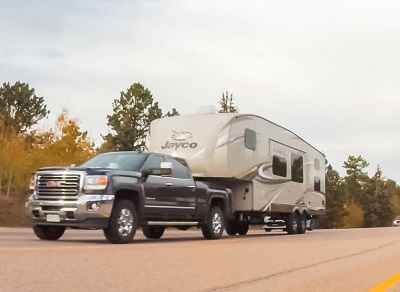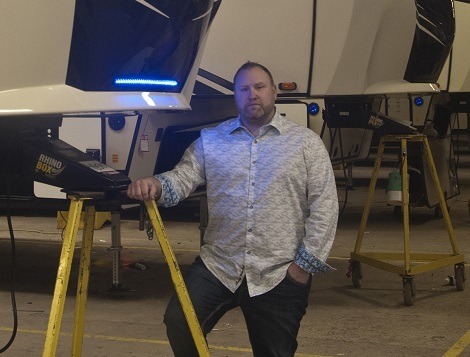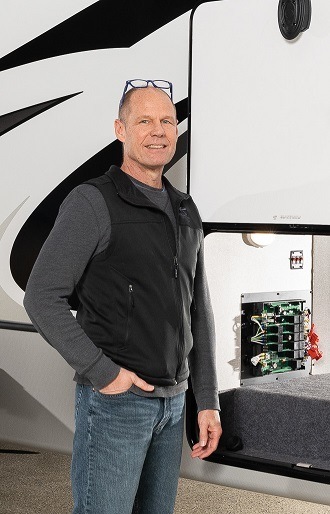
During an early March meeting of RVIA’s board of directors, a number of industry practices were analyzed, including the then-current limitations of 430 square feet for fifth wheels and 400 square feet for travel trailers in set-up mode.
While the board reconfirmed maintaining the square footage for travel trailers, its members opted to remove the maximum limitation for fifth wheels, “effective immediately.”
Bruce Hopkins, RVIA vice president of standards, said he expects a number of manufacturers will take advantage of the change.
“It permits them to build larger (square footage) units,” Hopkins said. “Not so much in increasing the footprint, because weight would be a problem if they get too much larger, but in having longer and deeper slideout rooms.
“Campers don’t necessarily want a bigger unit,” he added, “but they want more space inside.”
The change, Hopkins explained, can be traced to discussions RVIA had several years back with officials of the Department of Housing and Urban Development (HUD).

“We had an issue a few years ago where HUD began including the outside porch area of park model RVs (PMRV) in their square-footage limitation,” said Hopkins. “We had been under the impression that the square footage limit only applied to interiors.”
RVIA ultimately prevailed on the issue and porch area is not included in overall square footage limits for PMRVs. However, Hopkins said those meetings with HUD did clarify a few things.
“In the end, they came back and said if unit is built in compliance with either NFPA 1192 (for RVs) or ANSI A-119.5 (for PMRVs) standards, they would not declare it manufactured housing; it would remain an RV or park model RV,” Hopkins said.
However, he added, RVIA began receiving calls from manufacturers who pointed out that while the ANSI A-119.5 standard limited PM RVs to a maximum of 400 square feet, there was no such limitation written into the NFPA 1192 standards for RVs.
“That limit (430 square feet for fifth wheels) was a self-imposed restriction established by the board many years ago,” Hopkins said. “Without a limit being spelled out in the NFPA standard, the board elected to eliminate it.”
The existing limit on travel trailers, he added, was retained out of a concern for safety.

Curtis Gunter, general manager for Forest River’s Riverstone, Sandpiper, Sierra and Cedar Creek lines, said he expects “100 percent” of manufacturers of larger fifth wheels to take advantage of the change.
That said, he cautions dealers against anticipating huge alterations.
“Everyone will still be limited by certain state regulations and by the size of the unit they can send down an assembly line,” Gunter said. “The biggest advantage may be in having the ability to ‘tweak’ an existing floor plan by adding deeper slideouts to, say, a bedroom to allow for the addition of a wardrobe closet.”
Most existing fifth wheels, he added, have the ability to support wider and deeper slideouts, “but we’re talking inches, not feet. You still have design features such as kitchen islands to contend with.
“You may only be talking about the addition of perhaps 20 square feet, but it’s still a significant change,” Gunter said.

Mark Bullock, senior vice president of engineering for Keystone RV Co., concurred, adding that the Goshen, Indiana-based subsidiary of Thor Industries expects to also increase fifth wheel lengths in the future.
“We will be building units of greater than 430 square feet (in set-up mode) in the future,” he said. “But we will observe limits enacted by some states and Canadian provinces.”
As examples, Bullock noted that Nebraska wrote the 430-square-foot limit into its state bylaws, while Washington will again limit overall lengths to 46 feet with legislation that goes into effect in June. There is no federally mandated limit.
“If we do build bigger than 430 square feet—and there are some on the drawing boards right now—we won’t ship those units to states where their size conflicts with regulations,” he added.




